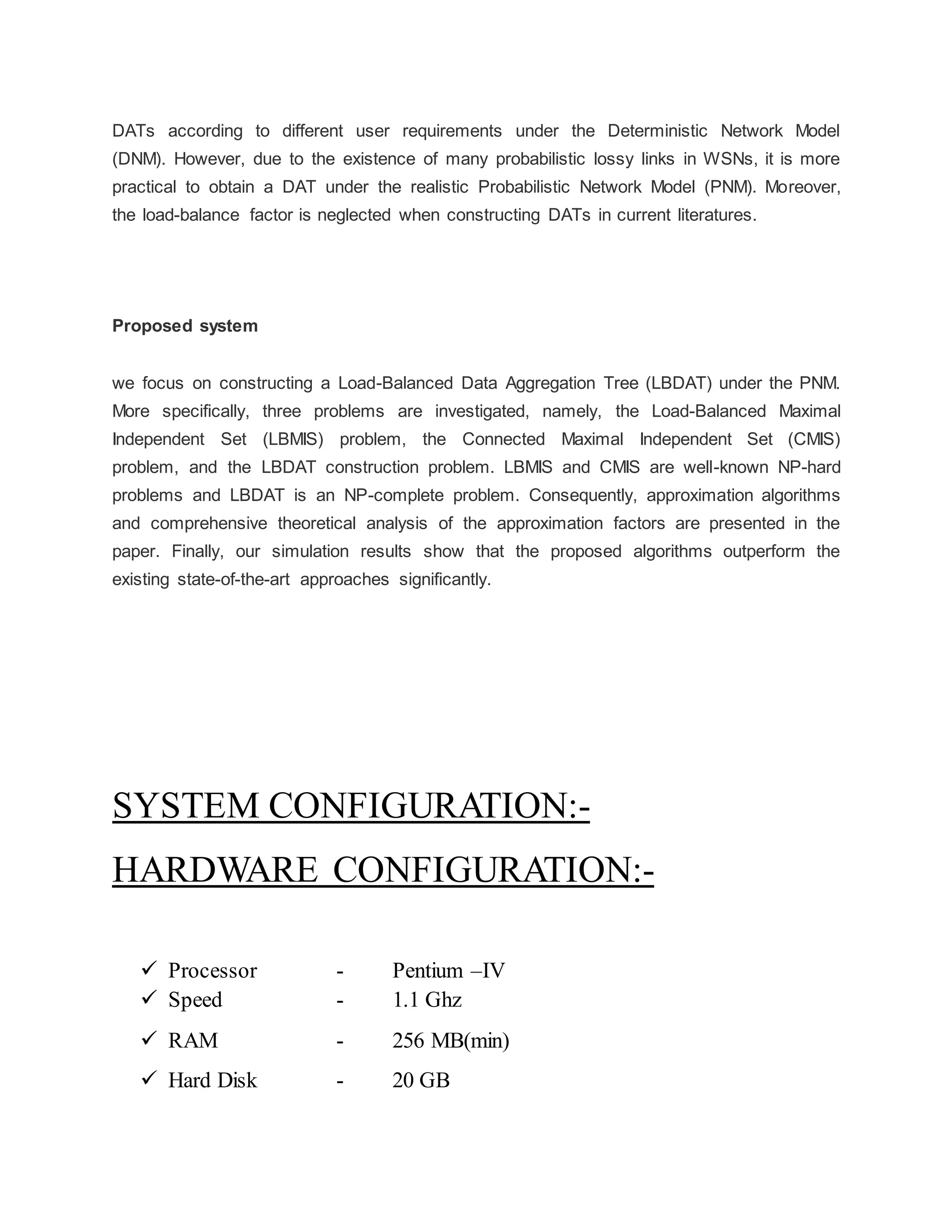The document discusses constructing load-balanced data aggregation trees (LBDATs) in probabilistic wireless sensor networks (WSNs), addressing challenges like load-balance factors often overlooked in previous approaches under deterministic models. It focuses on three NP-hard problems: load-balanced maximal independent set (LBMIS), connected maximal independent set (CMIS), and LBdat construction, presenting approximation algorithms and their performance analysis. Simulation results indicate that the proposed methods significantly outperform existing state-of-the-art solutions.


